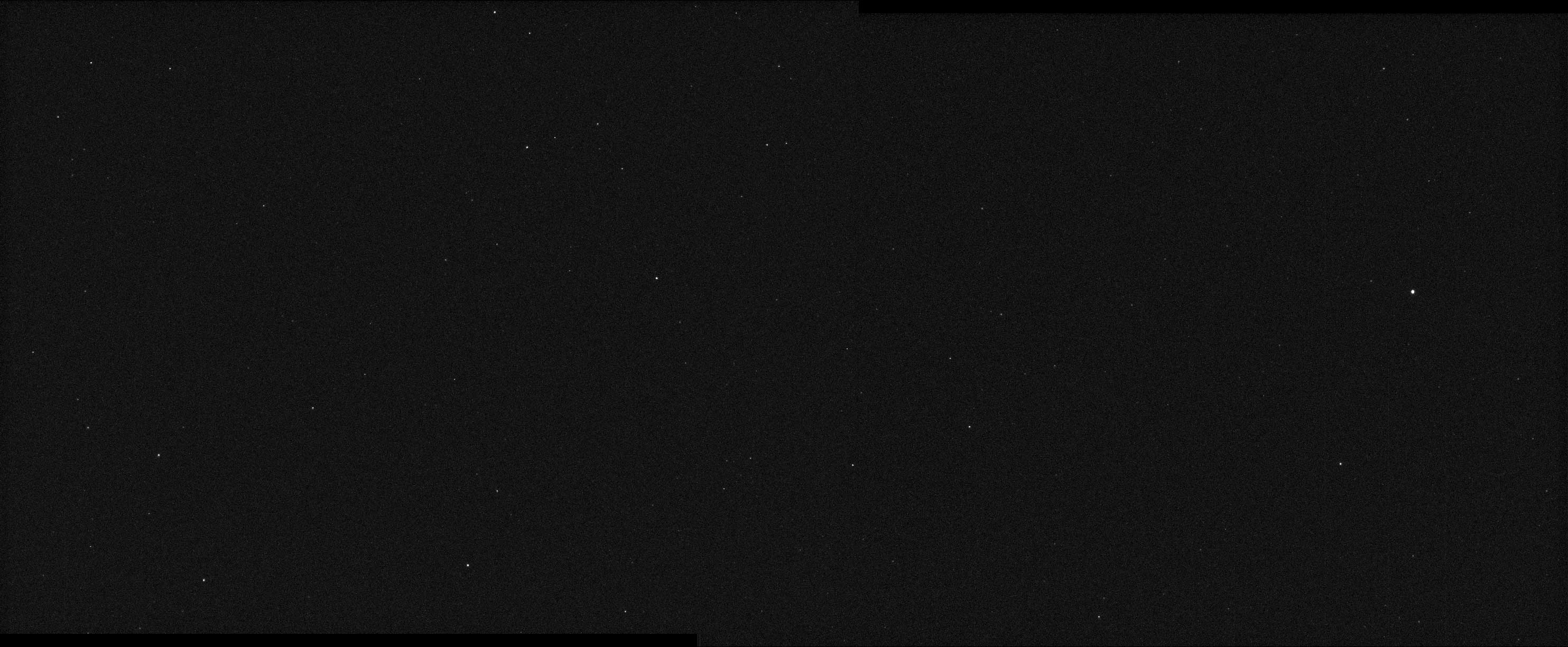It’s been quite the two months for NASA’s Psyche mission. Now, in the latest of its long list of successes, the spacecraft has snapped its first images – achieving a milestone called “first light”.
On December 4, the mission turned on Psyche’s twin cameras and photographed a star field in the constellation Pisces, according to the space agency. The resulting images – there were 68 in total, captured by both cameras – have been combined to create a stunning celestial mosaic.
NASA’s Psyche, the first-ever mission to a metal-rich asteroid, launched in October, embarking on a six-year journey to one of the most unusual (and expensive) objects in the Solar System. The spacecraft will travel 3.5 billion kilometers (2.2 billion miles) to visit its namesake, asteroid Psyche, which may be made of up to 60 percent metal.
Psyche (the asteroid, not the spacecraft – it’s confusing, we know!) has been known about for almost two centuries, but is still something of a mystery – one that the NASA mission is attempting to solve. The spacecraft is expected to arrive at the asteroid in July 2029 and will spend two years taking pictures, mapping the surface, and unveiling the chemistry of this weird world.
As a side mission, Psyche will be testing NASA’s Deep Space Optical Communications technology. Just a handful of weeks ago, it successfully beamed the first-ever laser message to Earth from far beyond the Moon, sending a laser encoded with test data 16 million kilometers (10 million miles), the farthest-ever demonstration of this type of communication.
The mission has also been busy snapping the stars, and in doing so, testing its imager instrument – check out its first images, of a star field in the constellation Pisces, below:

Stars in the constellation Pisces, imaged by NASA’s Psyche.
Image credit: NASA/JPL-Caltech/ASU
One of the cameras, Imager A, took the left half of the mosaic, while the other, Imager B, took the right half. The brightest star you can see is called mu Piscium (far right).
“These initial images are only a curtain-opener,” Arizona State University’s Jim Bell, the Psyche imager instrument lead, said in a press release.
“For the team that designed and operates this sophisticated instrument, first light is a thrill. We start checking out the cameras with star images like these, then in 2026 we’ll take test images of Mars during the spacecraft’s flyby. And finally, in 2029 we’ll get our most exciting images yet – of our target asteroid Psyche. We look forward to sharing all of these visuals with the public.”
It’s not just pretty pics we have to look forward to: the data collected will hopefully help to spill some of Psyche’s secrets (and maybe Earth’s too). The imager uses color filters to photograph in wavelengths of light both visible and invisible to the human eye to help determine the composition of the metal-rich asteroid.
The team will also create 3D maps of Psyche, furthering our understanding of its geology and offering clues as to its history. Check back in six (ish) years for the big reveal…
Source Link: NASA’s Psyche Mission Snaps Field Of Stars In “First Light” Images